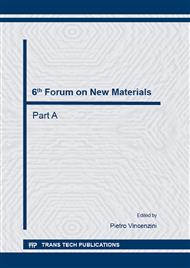p.90
p.96
p.102
p.112
p.118
p.124
p.131
p.137
p.146
Atomistic Models of Long-Term Hydrogen Diffusion in Metals
Abstract:
The effective and efficient storage of hydrogen is one of the key challenges in developing a hydrogen economy. Recently, intensive research has been focused on developing and optimizing metal-based nanomaterials for high-speed, high-capacity, reversible hydrogen storage applications. Notably, the absorption and desorption of hydrogen in nanomaterials is characterized by an atomic, deformation-diffusion coupled process with a time scale of the order of seconds to hours--far beyond the time windows of existing simulation technologies such as Molecular Dynamics (MD) and Monte Carlo (MC) methods. In this work, we present a novel deformation-diffusion coupled computational framework, which allows the long-term simulation of such slow processes and at the same time maintains a strictly atomistic description of the material. Specifically, we first propose a theory of non-equilibrium statistical thermodynamics for multi-species particulate solids based on Jayne's maximum entropy principle and the meanfield approximation approach. This non-equilibrium statistical thermodynamics model is then coupled with novel discrete kinetics laws, which governs the diffusion of mass--and possibly also conduction of heat--at atomic scale. Finally, this thermo-chemo-mechanical coupled system is solved numerically using a staggered procedure. The salient features of this computational framework are demonstrated in the simulation of a specific hydrogen diffusion problem using palladium nanofilms, which comes with a simulation time of one second. More generally, the proposed computational framework can be considered as an ideal tool for the study of many deformation-diffusion coupled phenomena in hydrogen-storage-related applications including, but not limited to, hydrogen embrittlement, grain boundary diffusion, and various cyclic behaviors.
Info:
Periodical:
Pages:
118-123
Citation:
Online since:
October 2014
Authors:
Price:
Сopyright:
© 2014 Trans Tech Publications Ltd. All Rights Reserved
Share:
Citation:


